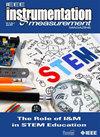无法破解的生物识别技术:物理不可解功能如何带来安全革命
IF 1.6
4区 工程技术
Q3 ENGINEERING, ELECTRICAL & ELECTRONIC
引用次数: 0
摘要
如今,在物联网(IoT)、云计算和信息技术的互操作性方面,技术进步通过可穿戴设备和智能设备推动了网络物理生态系统的发展。所有这些物联网设备都被设计用于启动多种服务或应用,需要身份管理系统,即服务、应用、资源或数据的用户访问控制系统。此外,访问控制系统基于模式识别系统,模式不会被遗忘、调换、伪造、丢失或被盗。因此,生物识别系统在安全性、社会认可度、性能和用户体验质量方面提供了一个绝佳的机会领域,因为生物识别特征对每个人来说都是独一无二的,并在其整个生命周期中持续存在,可以防止交换、丢失或遗忘。然而,有些生物特征并不是秘密,也就是说,有些特征可以在个人不知情或未经同意的情况下获得,例如社交媒体视频中的人脸或声音。同时,人工智能的发展促进了身份互换、属性操纵,以及通过图像、音频或视频合成技术(即 DeepFakes)进行逼真的表情交换。本文章由计算机程序翻译,如有差异,请以英文原文为准。
Unbreakable Biometrics: How Physical Unclonable Functions are Revolutionizing Security
Nowadays, technological advancements have pushed the growth of cyber-physical ecosystems through wearable and smart devices in the interoperability of the Internet of Things (IoT), cloud computing, and information technology. All these IoT devices are designed to launch multiple services or applications that require identity management systems, i.e., user access control systems for services, applications, resources, or data. Furthermore, access control systems are based on pattern recognition systems, where patterns cannot be forgotten, swapped, counterfeited, lost, or stolen. Consequently, biometric systems present an excellent opportunity area for security, social acceptance, performance, and experience quality for users, because biometric traits are unique to each individual and persist throughout their lifetime, preventing swapping, loss, or forgetting. Nonetheless, some biometric traits are not secrets, i.e., some traits can be acquired without an individual's knowledge and consent, e.g., a person's face or voice in social media videos. At the same time, the development of artificial intelligence has facilitated identity swap, attribute manipulation, and realistic expression exchange through image, audio, or video synthesis techniques known as DeepFakes.
求助全文
通过发布文献求助,成功后即可免费获取论文全文。
去求助
来源期刊

IEEE Instrumentation & Measurement Magazine
工程技术-工程:电子与电气
CiteScore
4.20
自引率
4.80%
发文量
147
审稿时长
>12 weeks
期刊介绍:
IEEE Instrumentation & Measurement Magazine is a bimonthly publication. It publishes in February, April, June, August, October, and December of each year. The magazine covers a wide variety of topics in instrumentation, measurement, and systems that measure or instrument equipment or other systems. The magazine has the goal of providing readable introductions and overviews of technology in instrumentation and measurement to a wide engineering audience. It does this through articles, tutorials, columns, and departments. Its goal is to cross disciplines to encourage further research and development in instrumentation and measurement.
 求助内容:
求助内容: 应助结果提醒方式:
应助结果提醒方式:


